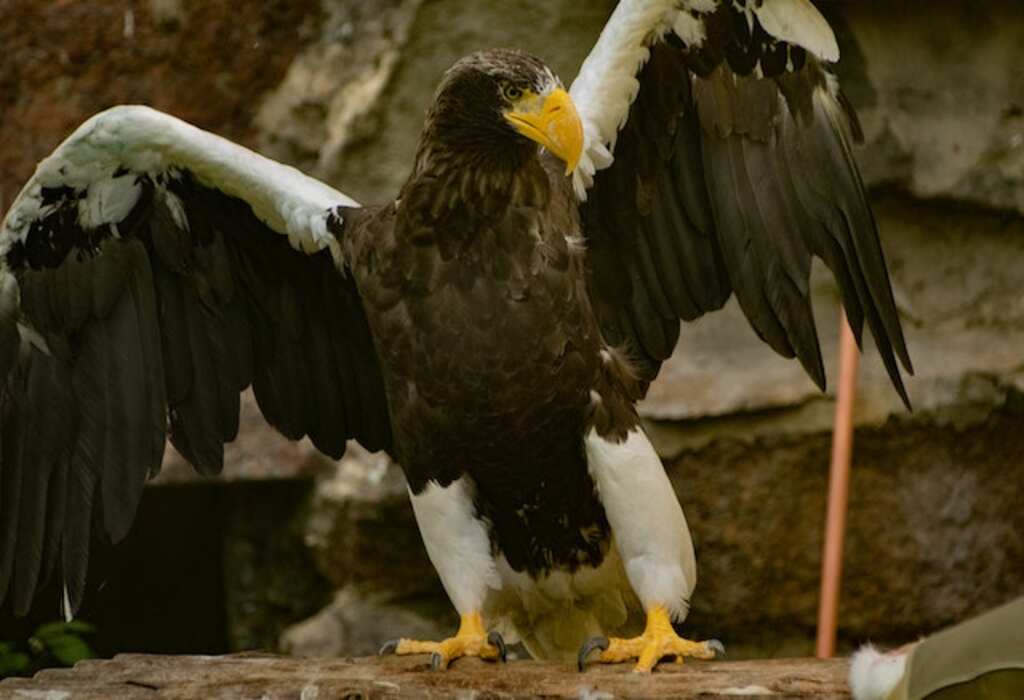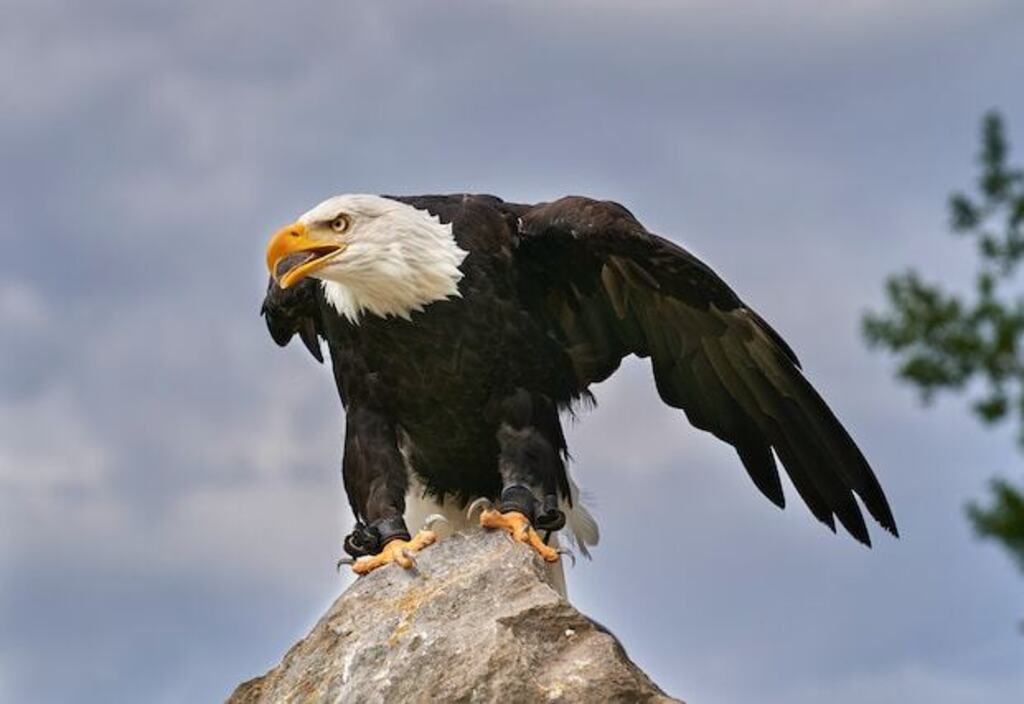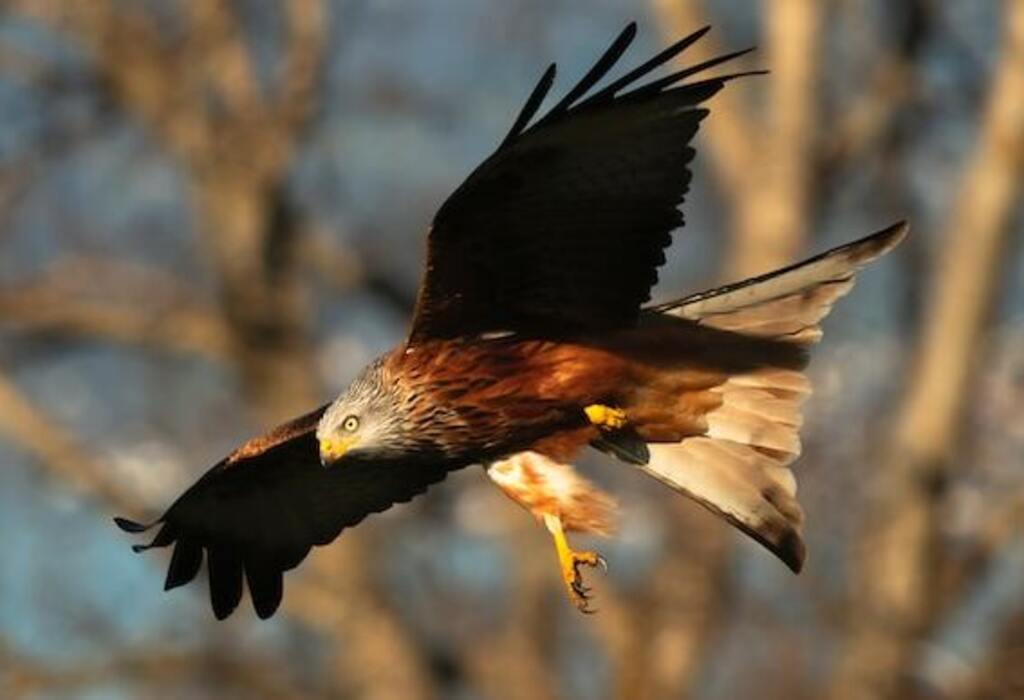“Which Eagle Has The Sharpest Talons?: Talon-tastic Tales of Claw-dropping Skills! Hold onto your hats (and fingers!), because we’re about to unravel the gripping truth about eagle talons.
From sky-high showdowns to razor-sharp duels, join us as we unveil the champion of claw craftsmanship in the avian world. It’s time to discover the bird with the sharpest edge!”
Table of Contents
- 1 Key Takeaways
- 2 Introduction to Eagles and their Talons
- 3 Harpy Eagle: The Mighty Predator
- 4 Golden Eagle: The Agile Hunter
- 5 Martial Eagle: The Strongest Grip
- 6 Philippine Eagle: The Largest Talons
- 7 African Crowned Eagle: The Stealthy Ambusher
- 8 Steller’s Sea Eagle: The Aquatic Predator
- 9 Bald Eagle: The Symbol of America
- 10 White-tailed Eagle: The Efficient Hunter
- 11 Conclusion: The Eagle with the Sharpest Talons
- 12 Fun Facts about Eagle Talons
- 13 Frequently Asked Questions
- 13.1 Are eagle talons sharp enough to puncture human skin?
- 13.2 How do eagles use their talons to catch and kill their prey?
- 13.3 Do all eagle species have equally sharp talons?
- 13.4 Can eagle talons be used as a form of defense against other predators?
- 13.5 Are there any unique adaptations in eagle talons that allow them to be so sharp?
- 14 Author
Key Takeaways
- Harpy Eagle is known for its immense size and powerful talons.
- Golden Eagle possesses talons with unparalleled sharpness.
- Martial Eagle has exceptional grip strength with its talons.
- Philippine Eagle has the largest talons among all eagle species.
Introduction to Eagles and their Talons
Eagles possess remarkably sharp and powerful talons, which enable them to capture and secure their prey with exceptional precision and force. Eagle talon adaptations have evolved over time to enhance their hunting strategies.
These adaptations include curved and razor-sharp talons that are perfectly designed for gripping and puncturing their prey.
Additionally, the talons of eagles are equipped with strong muscles and tendons, allowing them to exert tremendous force when striking their targets.
Furthermore, the talons are capable of tightly gripping and holding onto their prey, preventing any chance of escape.
These remarkable talons play a crucial role in the survival of eagles, as they enable these majestic birds to successfully hunt and secure their food sources.
Transitioning to the subsequent section, the harpy eagle, known as the mighty predator, possesses talons that are particularly formidable.
Harpy Eagle: The Mighty Predator

The Harpy Eagle, known for its massive size and powerful talons, possesses a remarkable anatomy specifically adapted for hunting.
Its talons are incredibly sharp and can exert an astonishing amount of force, allowing it to effortlessly snatch and hold onto prey.
In addition to its impressive talons, the Harpy Eagle employs various hunting techniques, such as perching in strategic locations and patiently waiting for its unsuspecting prey to pass by.
Once the opportunity arises, it swiftly descends upon its target, using its talons to immobilize and capture it.
The Harpy Eagle’s diet consists mainly of arboreal mammals, including sloths and monkeys, which it effortlessly snatches from the treetops using its powerful talons.
The Anatomy of Harpy Eagle Talons
With their impressive size and formidable appearance, Harpy eagle talons serve as a testament to their exceptional hunting capabilities.
These talons are well-adapted to the eagle’s hunting strategies and are a crucial tool for capturing and subduing prey.
The talons of a Harpy eagle are incredibly strong and sharp, allowing them to grasp and hold onto their prey tightly.
The curved shape of the talons helps the eagle maintain a secure grip, preventing the prey from escaping.
Additionally, the talons are equipped with long, sharp claws that can easily pierce through the flesh of their prey.
The talons of a Harpy eagle are also exceptionally large, providing the bird with a powerful and effective weapon for hunting.
These adaptations make the Harpy eagle one of the most successful predators in the avian world. Moving on to the hunting techniques and prey selection of these magnificent birds…
Hunting Techniques and Prey
Despite their fearsome appearance, Harpy eagles employ a variety of strategic hunting techniques, carefully selecting their prey with precision and subtlety. Their hunting strategies include:
- Ambush: Harpy eagles are known for their exceptional camouflage skills. They perch silently on high branches, blending seamlessly with the surrounding foliage, patiently waiting for the perfect opportunity to strike. Their large size allows them to overpower prey much larger than themselves.
- Stealth: These eagles are masters of stealth, silently gliding through the dense forest canopy to surprise their prey. With their broad wings and short tails, they maneuver effortlessly between trees, making minimal noise to avoid alerting potential victims.
- Opportunistic Feeding: Harpy eagles have a diverse diet, ranging from monkeys and sloths to reptiles and birds. They adapt their hunting techniques based on the availability of prey in their habitat, allowing them to exploit various food sources.
This intricate mix of hunting strategies and prey selection enables Harpy eagles to thrive in their environment, showcasing their remarkable adaptability and hunting prowess.
As we delve into the next section about the golden eagle, we will discover another fascinating example of an agile hunter.
Golden Eagle: The Agile Hunter

Agile and swift, the Golden Eagle possesses talons that are renowned for their unparalleled sharpness, instilling awe and admiration in those who witness its hunting prowess.
These remarkable talons enable the Golden Eagle to effectively capture and kill its prey with precision and efficiency.
The agility of the Golden Eagle allows it to soar through the sky, scanning the ground below for potential targets.
Once suitable prey is spotted, the eagle will dive down with astonishing speed, using its sharp talons to snatch the unsuspecting victim.
The hunting techniques of the Golden Eagle involve a combination of stealth, speed, and deadly accuracy. To emphasize the awe-inspiring nature of the Golden Eagle’s talons, consider the following comparison:
| Golden Eagle Talons | Human Fingernails |
|---|---|
| Length: 3 inches | Length: 0.5 inches |
| Strength: 400 pounds of pressure | Strength: 20 pounds of pressure |
These figures highlight the immense power and sharpness of the Golden Eagle’s talons, making it a formidable predator in the avian kingdom.
As we transition to the next section about the ‘martial eagle: the strongest grip,’ we delve into another magnificent eagle species that possesses an extraordinary hunting attribute.
Martial Eagle: The Strongest Grip

The Martial Eagle is renowned for the remarkable strength of its talons, which enables it to maintain a powerful grip on its prey.
Its talons are adapted for hunting and capturing a wide range of prey, from small mammals to birds.
In terms of hunting tactics, the Martial Eagle typically relies on a combination of stealth, patience, and agility to surprise and overpower its prey.
The Remarkable Strength of Martial Eagle Talons
With their formidable grip, Martial Eagle talons demonstrate exceptional strength and prowess in capturing prey.
These remarkable adaptations have been the subject of scientific research, with studies focusing on talon strength measurement.
The talons of Martial Eagles are known to be among the most powerful in the avian world, capable of exerting tremendous force when grasping their prey.
They feature sharp, curved claws that can puncture and hold onto the flesh of their victims with remarkable tenacity.
Additionally, the size and shape of their talons allow for a wide range of movement, enabling them to manipulate and control their prey effectively.
This combination of strength and dexterity makes the Martial Eagle a formidable predator in the avian kingdom.
Moving on to the subsequent section about prey and hunting tactics, the power of their talons plays a vital role in the success of their hunting endeavors.
Prey and Hunting Tactics
Preying on a variety of small to medium-sized mammals and birds, the hunting tactics employed by Martial Eagles are a testament to their adaptability and efficiency as predators.
These eagles possess remarkable talon adaptations that contribute to their successful hunting endeavors.
With their strong, sharp talons, Martial Eagles are able to secure a firm grip on their prey, preventing any chance of escape.
Their talons are equipped with long, curved claws that aid in grabbing and holding onto their victims.
The strength of their talons allows them to take down prey larger than themselves, such as small antelopes and monkeys.
Additionally, their talons are covered in a rough texture, providing an even better grip. This combination of strength and grip makes the Martial Eagle a formidable predator.
Transitioning into the subsequent section about the Philippine Eagle, it is worth exploring the largest talons in the eagle kingdom.
Philippine Eagle: The Largest Talons

Philippine Eagles’ impressive talons, known as the largest among all eagle species, possess remarkable sharpness that enables them to efficiently capture their prey.
These talons serve as their primary hunting tools, allowing them to seize and hold onto their victims with exceptional strength. Here are four key features that make the Philippine Eagle’s talons noteworthy:
- Size: As the largest bird of prey in the world, the Philippine Eagle’s talons are larger and more robust compared to other eagle species. This size advantage gives them a greater ability to catch and subdue larger prey.
- Curvature: The talons are curved and razor-sharp, perfectly designed for piercing and gripping the prey. This curvature maximizes the contact area with the target, enhancing their efficiency in capturing and securing their meal.
- Strength: The talons are incredibly powerful, capable of exerting a tremendous amount of force. This strength enables the Philippine Eagle to immobilize its prey swiftly and effectively.
- Adaptation: The talons have evolved to adapt to the eagle’s environment and prey. They are perfectly suited for gripping onto tree branches and capturing fast-moving prey, such as monkeys or flying lemurs.
Transitioning to the subsequent section about the African Crowned Eagle, another eagle species with unique hunting tactics.
African Crowned Eagle: The Stealthy Ambusher

The African Crowned Eagle possesses unique hunting tactics that allow it to become a stealthy ambusher in its pursuit of prey.
With a wingspan of up to 2 meters and weighing around 4 to 5 kilograms, this eagle is well-equipped for its predatory lifestyle.
To ensure its success, the African Crowned Eagle utilizes stealthy hunting techniques and ambushes its unsuspecting prey.
By perching silently on a tree branch or hiding in dense foliage, it patiently waits for the perfect opportunity to strike.
Once it spots a potential target, the eagle swoops down with incredible speed and accuracy, using its sharp talons to grasp its prey firmly.
This eagle’s hunting prowess is further enhanced by its powerful legs and razor-sharp beak, allowing it to swiftly dispatch its victims.
The following table provides a visual representation of the African Crowned Eagle’s stealthy hunting techniques and ambush strategies:
| Stealthy Hunting Techniques | Ambush Strategies |
|---|---|
| Perching Silently | Hiding in Foliage |
| Patiently Waiting | Swooping Down |
| Swift and Accurate Strikes | Powerful Talons |
Now transitioning to the subsequent section about the Steller’s Sea Eagle: the aquatic predator, we delve into another remarkable eagle species that showcases its own unique hunting techniques.
Steller’s Sea Eagle: The Aquatic Predator

Dubbed as the ‘king of the sea,’ the Steller’s Sea Eagle exhibits remarkable hunting techniques as it navigates the aquatic environment in search of its prey.
With a diet primarily consisting of fish, this impressive bird relies on its powerful talons to snatch its meals from the water’s surface.
The Steller’s Sea Eagle is found in the coastal regions of northeastern Asia, including Russia and Japan.
It prefers habitats such as estuaries, river mouths, and large lakes, where it can easily access its main food source.
This majestic eagle has adapted well to its surroundings, with its large size and strong beak enabling it to capture and consume sizable fish.
Its distinctive white head and tail feathers, along with its piercing gaze, make it an awe-inspiring sight in its natural habitat.
Transitioning to the subsequent section about the ‘bald eagle: the symbol of America,’ we shift our focus from the seas to the skies.
Bald Eagle: The Symbol of America

With its distinctive white head and tail feathers, the bald eagle is a powerful and majestic bird that has become an iconic symbol of America.
This magnificent bird holds great significance in American culture, representing freedom, strength, and independence.
The symbolism of the bald eagle can be seen in various aspects of American society, from the national emblem to its presence on currency and official seals.
However, the bald eagle has faced significant challenges in the past due to habitat loss, pollution, and illegal hunting.
As a result, extensive conservation efforts have been undertaken to protect this species and ensure its survival.
These efforts have been successful, and the bald eagle population has rebounded in recent years.
The next section will explore the white-tailed eagle, another remarkable eagle known for its exceptional hunting skills.
White-tailed Eagle: The Efficient Hunter

The White-tailed Eagle, also known as the sea eagle, possesses exceptionally sharp talons that are highly effective in capturing and subduing prey. These talons are characterized by their length, curvature, and strength, allowing the eagle to seize and hold onto its prey with remarkable precision and force.
In terms of hunting techniques, the White-tailed Eagle primarily employs a combination of aerial hunting and perch hunting, utilizing its keen eyesight and agile flight to locate and pursue prey, while also utilizing strategic perches to scan the surrounding area for potential targets.
Additionally, the White-tailed Eagle exhibits a diverse prey preference, with its diet consisting of various fish species, waterfowl, small mammals, and carrion, showcasing its adaptability and versatility as a hunter.
The Sharp Talons of White-tailed Eagles
White-tailed eagles possess talons that are incredibly sharp and capable of exerting immense pressure, enabling them to effectively grasp and immobilize their prey. These sharp talons are a crucial adaptation for the white-tailed eagle’s hunting success.
Here are four key features of their talons:
- Strength: The talons of white-tailed eagles are exceptionally strong, allowing them to exert a powerful grip on their prey. This strength is essential for capturing and holding onto large and struggling prey items.
- Length and curvature: The talons of white-tailed eagles are long and curved, providing them with a larger surface area to grasp their prey. This design helps in securing a firm hold, preventing escape.
- Sharpened tips: The tips of their talons are razor-sharp, enabling them to pierce through the prey’s skin and hold it firmly. This ensures that the prey remains immobilized during the eagle’s attack.
- Serrated edges: The inner edges of their talons are serrated, further enhancing their grip on the prey. This serration acts like tiny hooks, increasing the effectiveness of their hold.
These remarkable talons allow white-tailed eagles to excel in capturing and subduing their prey. Transitioning into the subsequent section about hunting techniques and prey preference, these talons play a crucial role in the eagle’s ability to successfully hunt and secure its preferred prey.
Hunting Techniques and Prey Preference
Utilizing their formidable hunting arsenal, white-tailed eagles employ a range of strategic techniques to secure their preferred prey, employing a well-honed set of tools that excel in their task.
These eagles have developed an impressive array of hunting techniques that allow them to efficiently capture their prey.
One of their most common techniques is called stooping, where the eagle dives from a great height and uses its sharp talons to grasp its prey mid-flight.
Another technique they use is known as perch hunting, where they patiently wait on a high vantage point and then swoop down to snatch their prey with their powerful talons.
White-tailed eagles also prefer certain types of prey, such as fish, waterfowl, and small mammals.
They have been observed to have a particular preference for fish, which makes up a significant portion of their diet.
With their exceptional hunting techniques and prey preference, white-tailed eagles have developed a reputation as skilled and successful hunters.
Transitioning to the subsequent section, the sharpness of their talons plays a crucial role in their hunting prowess.
Conclusion: The Eagle with the Sharpest Talons
Therefore, it can be concluded that the eagle species with the sharpest talons possesses a distinct advantage in capturing and securing its prey.
The comparison of talon sharpness across different eagle species reveals three crucial characteristics of the eagle with the sharpest talons.
Firstly, these talons are exceptionally long and curved, enabling them to exert a powerful grip on their prey.
Secondly, they are razor-sharp, allowing the eagle to pierce through the prey’s flesh effortlessly. Lastly, the talons possess a strong grip strength, ensuring that the prey does not escape once captured.
These attributes make the eagle with the sharpest talons a formidable predator in the avian world.
Transitioning to the subsequent section about ‘fun facts about eagle talons,’ it is interesting to explore the various adaptations and unique features that make eagle talons truly remarkable.
Fun Facts about Eagle Talons
Continuing our exploration of the fascinating world of eagle talons, let us delve into some intriguing facts about their adaptations and unexpected uses.
Eagle talons are truly remarkable tools, finely honed through evolution to serve a multitude of purposes.
One interesting adaptation is the presence of sharp, curved claws that allow eagles to firmly grasp and immobilize their prey.
Additionally, these talons possess a high degree of flexibility, enabling eagles to adjust their grip as needed during flight or while perched.
But eagle talons are not limited to hunting alone; they also serve unexpected purposes.
For example, some species of eagles use their talons to engage in a behavior known as ‘talon grappling,’ where two eagles interlock their talons mid-air during courtship displays or territorial disputes.
These unique adaptations and unusual uses of eagle talons highlight the remarkable versatility and adaptability of these magnificent birds.
Frequently Asked Questions
Are eagle talons sharp enough to puncture human skin?
Eagle talons possess remarkable sharpness due to their curved shape, pointed tip, and strong keratin composition. In comparison to other bird species, such as hawks and falcons, eagle talons are known to be exceptionally sharp and capable of puncturing human skin.
How do eagles use their talons to catch and kill their prey?
Eagle talons, with their sharp and curved claws, are a crucial tool for hunting and killing prey. By gripping tightly onto their victims, eagles can immobilize them, and their strong grip ensures a successful catch.
Do all eagle species have equally sharp talons?
Eagle species vary in the sharpness of their talons due to differences in their evolutionary history and talon anatomy. Understanding the underlying genetic and morphological factors can provide insights into the diversity of talon sharpness among different eagle species.
Can eagle talons be used as a form of defense against other predators?
Eagle talons can be used for hunting purposes, as they are sharp and powerful. Other animals with similarly sharp talons include hawks, owls, and falcons. These talons serve as effective defense mechanisms against predators.
Are there any unique adaptations in eagle talons that allow them to be so sharp?
Eagle talons possess unique adaptations that enable their remarkable sharpness. These adaptations, such as curved tips, strong grip, and razor-like edges, contribute to their formidable defensive capabilities against predators and make them highly efficient at capturing prey.


